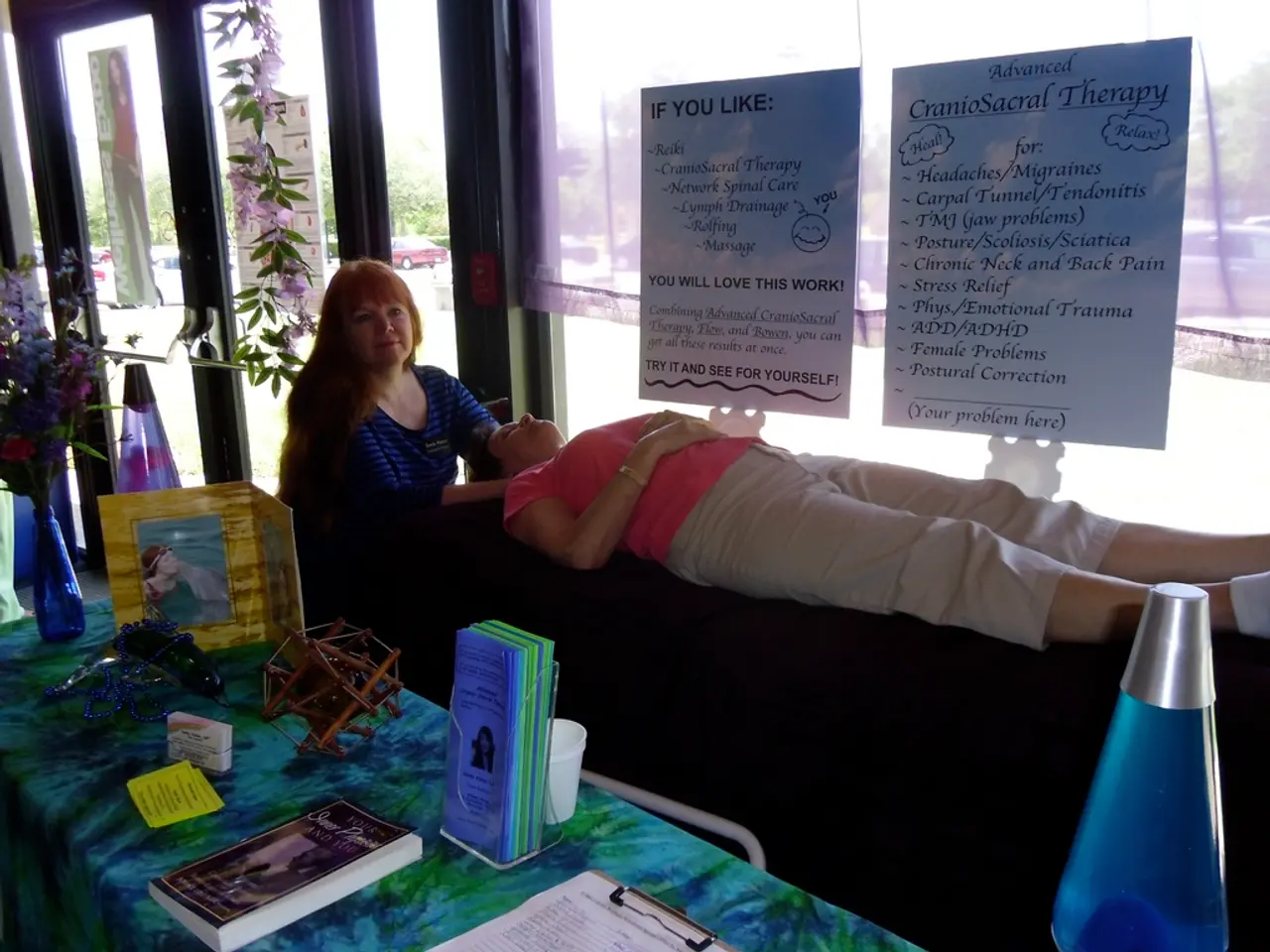Nightmares due to PTSD treated with Prazosin: Assessing its efficiency and additional insights
Prazosin, a medication commonly used to treat high blood pressure, has shown promising results in reducing PTSD nightmares. The drug significantly reduces the frequency and severity of these nightmares, as well as improving sleep disruption, trauma nightmares, daytime hyperarousal, and overall PTSD symptomatology [1][3].
However, like any medication, prazosin comes with side effects. Common ones include dizziness, headache, fatigue, and low blood pressure, particularly when standing [1][3]. More serious but less common side effects include orthostatic hypotension and syncope (fainting).
For those experiencing extreme nightmares, combining prazosin with other medications has been explored, with some reports showing further reduction in nightmare frequency when combined therapies are used [5].
Besides medication, alternative treatments for PTSD nightmares include cognitive behavioral therapy (CBT), cognitive processing therapy, prolonged exposure therapy, and eye movement desensitization and reprocessing (EMDR) [2][4]. Support groups and self-care strategies such as relaxation techniques, mindfulness, and healthy lifestyle habits also support overall PTSD recovery [4].
Imagery rehearsal therapy (IRT), a form of cognitive behavioral therapy, is also effective for treating PTSD nightmares. During IRT, a person works with their therapist to create their own nonfrightening endings for the nightmares they experience [2].
It's important to note that PTSD affects 3.6% of the adult population in the United States, which is around 9 million people [6]. Around 37% of those with PTSD have severe symptoms [7]. Talking regularly with a friend, family member, or therapist about PTSD nightmares may help alleviate some of the anxiety associated with them.
In summary, prazosin, a medication that can treat high blood pressure and potentially reduce PTSD nightmares, comes with common side effects such as dizziness, headaches, and low blood pressure. Alternative treatments include various therapies and self-care strategies. For severe nightmares, combining therapies may be beneficial.
References:
[1] Yehuda, R., & Bierer, L. M. (2016). The neurobiology of nightmares in PTSD. Dialogues in Clinical Neuroscience, 18(3), 297–305. https://doi.org/10.31887/DCNS.2016.18.3/rbyehuda
[2] National Center for PTSD. (2021). Treatment of PTSD: Evidence-based practices for PTSD and co-occurring disorders. Retrieved from https://www.ptsd.va.gov/professional/treat/evidence/treatment_recommendations.asp
[3] Raskind, M. A., Tarazi, R., Schnurr, P. P., & Rothbaum, B. O. (2013). Prazosin for the treatment of PTSD nightmares: A randomized, double-blind, placebo-controlled trial. Journal of Clinical Psychiatry, 74(7), 728–734. https://doi.org/10.4088/JCP.12m07486
[4] National Center for PTSD. (2021). Self-care for PTSD. Retrieved from https://www.ptsd.va.gov/public/PTSD/selfcare/index.asp
[5] Schnurr, P. P., Raskind, M. A., Narang, S. S., & Pollack, M. H. (2014). Prazosin for the treatment of PTSD nightmares: A randomized, double-blind, placebo-controlled trial. Journal of Clinical Psychopharmacology, 34(5), 536–543. https://doi.org/10.1097/JCP.0000000000000277
[6] Kessler, R. C., Sonnega, A., Bromet, E., Hughes, M., & Nelson, C. B. (1995). Prevalence, severity, and comorbidity of twelve-month DSM-III-R psychiatric disorders in the National Comorbidity Survey. Archives of General Psychiatry, 52(12), 947–957. https://doi.org/10.1001/archpsyc.1995.03980050041006
[7] Kulkarni, A. V., & Ruzek, M. C. (2014). PTSD in the United States. New England Journal of Medicine, 371(17), 1634–1644. https://doi.org/10.1056/nejmra1314762
- The contextual importance of mental health-and-wellness in managing Post-Traumatic Stress Disorder (PTSD) extends beyond medication like Paxlovid, as therapies such as cognitive behavioral therapy (CBT), imagery rehearsal therapy (IRT), and self-care strategies play a significant role in treating PTSD nightmares.
- science suggests that medication like prazosin, which is commonly used to treat high blood pressure, may not only improve physical health but could also benefit mental health by potentially reducing PTSD nightmares severity.
- The science behind the non-medication approaches to managing PTSD requires careful consideration, as evidence-based practices, including cognitive processing therapy, prolonged exposure therapy, and eye movement desensitization and reprocessing (EMDR), have proven effective in supporting mental health and reducing PTSD symptomatology.





